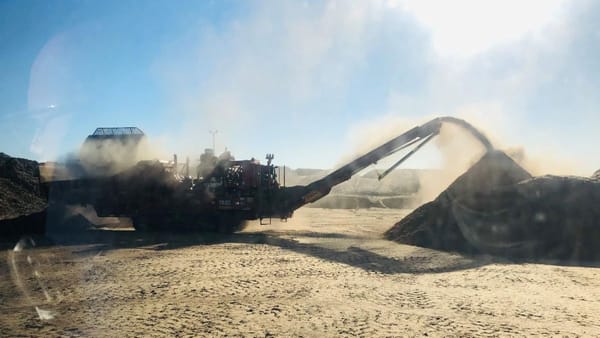Climate change plan calls for tree planting, emissions reduction in Murray Bridge
Murray Bridge experienced a cool year as the rest of Australia warmed in 2020, but the city's council is hedging its bets.

This story was originally published behind Murray Bridge News’ paywall. Paywalled stories are unlocked four weeks after publication. Can’t wait that long? Subscribe here.

Street lights will be replaced, emissions reduced and shady trees planted across Murray Bridge under a council plan to tackle climate change.
Councillors approved a draft climate emergency action plan for the city last month, five months after it was first proposed.
The plan focuses on slowing down climate change by reducing greenhouse gas emissions; adapting to it by planting trees that can keep the city cooler; and helping residents and businesses do the same.
Actions proposed by the council include:
- Replacing 1600 streetlights with energy-efficient LEDs over the next 18 months
- Measuring temperatures at street level, and planting more trees in hot spots
- Replacing artificial turf with grass or garden beds
- Considering the replacement of the council’s petrol-fuelled vehicles with electric models
The council will also set an emissions reduction target and incorporate it into its decision-making, and may even create a “climate change action fund” in its annual budgets.
In recent years it has already finished a stormwater reuse scheme which saves 200 megalitres of water per year and, at its Seventh Street office, installed a 100-kilowatt solar power system and an electric car charging station.
Residents will get to have their say on the climate change plan when it is published for public consultation during the next month.
Majority of councillors supported climate change action
Only one of Murray Bridge’s nine councillors opposed the plan: Clem Schubert, who said he couldn’t understand what all the fuss was about.
Australia had regularly faced droughts since at least the 19th century, he said.
“All of a sudden we’re on climate change, we’re doing this, we’re doing that, we’re doing something else,” he said at the council’s December meeting.
“The world’s changed, and so have our habits, but this is Australia ... Australia has got drought problems and issues and always will.
“I don’t know why we continue chasing this.”
Mayor Brenton Lewis countered that no-one was disputing the harshness of Australia’s climate.
“What we’re required to do as an entity is to have a reasonable plan of management as to how we, as a community, foresee these things happening and what we’ll do about (it),” he said.
Murray Bridge bucked the trend as Australia warmed in 2020
Meanwhile, Murray Bridge largely avoided the impact of climate change in 2020, according to the Bureau of Meteorology.
While Australia as a whole experienced its fourth-hottest year on record, with temperatures 1.15 degrees above the long-term average, our city was actually a little cooler than usual.
The mean maximum and minimum temperatures recorded locally were 0.8 and 0.4 degrees below the long-term average, respectively.
Just over 300 millimetres of rainfall was recorded in Murray Bridge during 2020, almost bang on the long-term average.
The hottest day of 2020 was January 30, when the temperature reached 45.8 degrees; and the year’s coldest night, and one of the coldest ever recorded locally, was August 5, when it fell to -4.4.
Still, by 2100 daytime temperatures in the Murraylands are projected to increase by up to 3.6 degrees and rainfall to decline by up to 22% unless more is done to stop climate change, according to the Goyder Institute.
Murray Bridge in particular can expect twice as many days over 35 degrees by 2090 unless action is taken, the Australia Institute has found.
A global reduction in greenhouse gas emissions would slow the rate of climate change and help us avoid its worst effects during the lifetimes of anyone alive today.
Greenhouse gas emissions estimated at more than 300,000 tonnes of greenhouse gas was released into the atmosphere from the Murray Bridge district in 2018-19, according to local government climate tool Snapshot.
Road transport was the leading source of emissions (114,300t), followed by agriculture (94,200t) and electricity use (72,800t).





